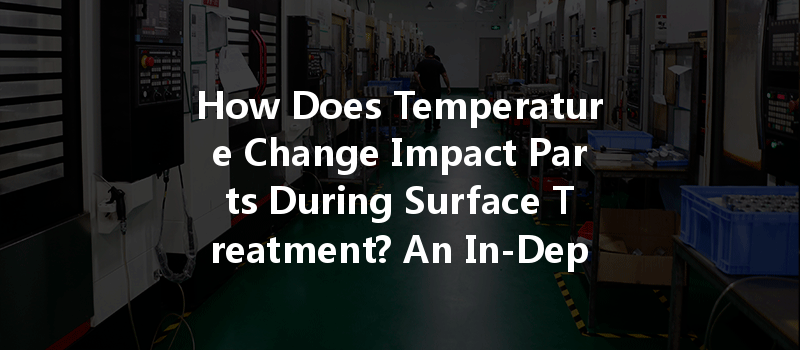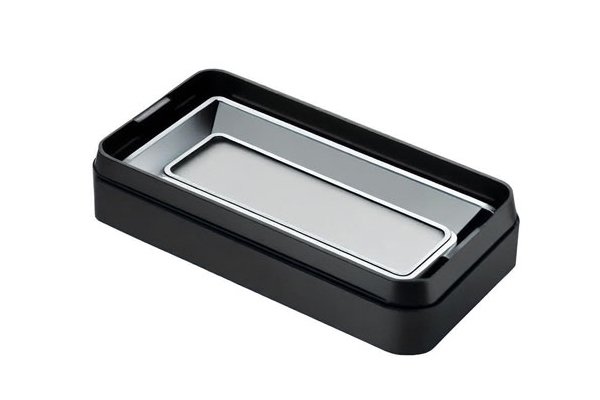*
In the realm of manufacturing and machining, the importance of temperature is often understated, yet it plays a pivotal role in determining the quality and longevity of surface-treated parts. At YL Machining, we understand that the temperature fluctuations during the surface treatment process can significantly affect material properties, coating adhesion, and overall product performance. This article will explore the multifaceted impacts of temperature variations on various surface treatment processes, delve into the science behind these effects, and provide actionable insights into optimizing practices for superior results.
Surface treatment encompasses a variety of processes aimed at achieving specific material characteristics such as improved corrosion resistance, enhanced durability, and better aesthetic appeal. Common methods include anodizing, electroplating, powder coating, and thermal spraying. Each method relies on a delicate balance of temperature control, chemical reactivity, and time to yield optimal outcomes.
1.
Temperature directly influences the kinetics of chemical reactions involved in surface treatments. Whether a surface is being coated, etched, or otherwise modified, maintaining an ideal temperature range is crucial for achieving consistent quality. Potential issues that arise from poor temperature control can lead to defects such as poor adhesion, uneven coating thickness, and compromised mechanical properties.
The following sections will dissect how temperature fluctuations specifically affect three major surface treatment processes: anodizing, electroplating, and powder coating.
2.
Anodizing is an electrolytic process that thickens the natural oxide layer on the surface of metals, primarily aluminum. The process involves immersing the substrate in an acid electrolyte and passing a direct current.
2.1.
2.
Electroplating involves depositing a layer of metal on a substrate using an electrochemical process. The deposition thickness, quality, and overall uniformity are influenced by the bath temperature.
2.2.
2.
Powder coating involves applying a dry powder paint that is then cured under heat to form a durable finish. Temperature is critical, both in the application and the curing stages.
2.3.

3.
For manufacturers and processors, it’s crucial to implement comprehensive temperature control strategies to minimize defects and ensure quality in surface treatment processes.
3.1.
3.
3.
Let’s explore two case studies illustrating the importance of temperature control in surface treatment processes.
4.
Background: A manufacturer of high-performance aluminum components faced issues with batch inconsistencies in anodizing.
Implementation: After analyzing the problem, they introduced precise temperature control systems, implemented rigorous monitoring, and ensured the anodizing baths maintained an optimal temperature range.
Outcome: Post-implementation, defects were reduced by 30%, and customer satisfaction ratings improved as a result of increased quality consistency.
4.
Background: An automotive component supplier noted frequent complaints about corrosion on plated parts.
Implementation: The organization invested in advanced temperature control mechanisms for their electroplating solutions, ensuring ideal temperature conditions were maintained throughout each processing stage.
Outcome: The corrosion complaints plummeted by 50%, showcasing the crucial role that temperature monitoring played in enhancing product performance.
In conclusion, temperature control is paramount in surface treatment processes, significantly influencing the quality, durability, and functionality of end products. At YL Machining, we recognize that optimum temperature conditions can yield transformative results, leading to enhanced adhesion, improved mechanical properties, and prolonged service life of treated parts.
As industries evolve and the demand for precision engineering intensifies, the focus on well-rounded temperature management practices will continue to rise. By embracing this knowledge and implementing best practices, manufacturers can ensure their products meet the highest quality standards, establishing a reputation for excellence in an increasingly competitive landscape.
Call to Action*
We invite industry professionals and businesses to reach out to YL Machining for expert advice on optimizing surface treatment processes, leveraging our knowledge and experience to enhance quality and performance in your manufacturing operations.
—
This article serves as an extensive exploration of the impact of temperature changes on parts during surface treatment. By informing our readers, we aim to foster a deeper understanding of the complexities in the machining process, allowing for better decision-making and improved outcomes across the board in their respective industries.



